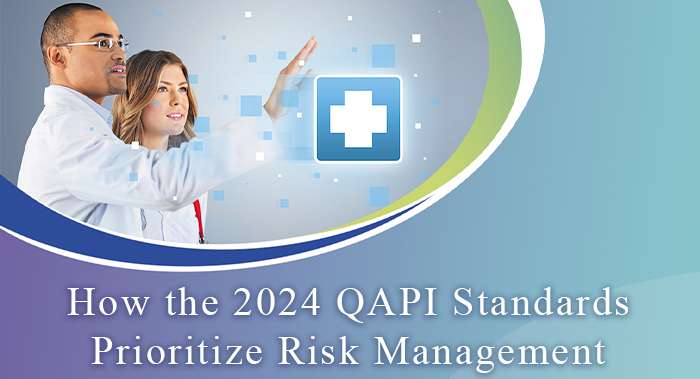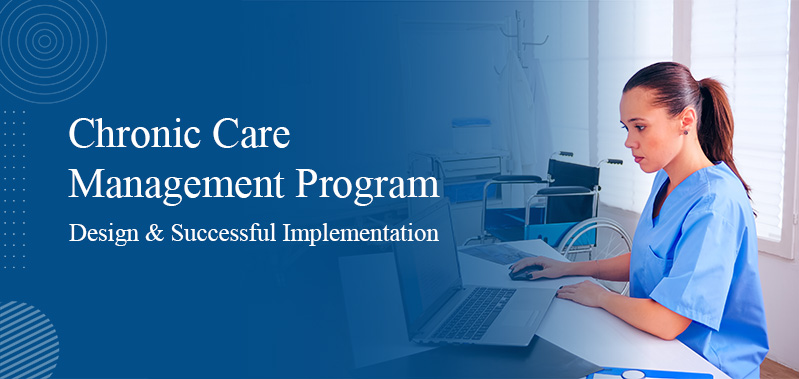
How the 2024 QAPI Standards Prioritize Risk Management
On March 9, the Centers for Medicare & Medicaid Services (CMS) took a significant step in refining the regulatory landscape for healthcare facilities by issuing new interpretive guidelines. These guidelines elucidate the necessary actions hospitals must take to adhere to the Condition of Participation for Quality Assessment and Performance Improvement (QAPI).
Before heading to the new CMS hospital QAPI standards 2024, it’s crucial to understand some key points related to QAPI. Let’s begin!
QAPI and Background
Quality Assurance and Performance Improvement (QAPI) play a crucial role in healthcare by ensuring that organizations consistently deliver high-quality care. In 2024, the Centers for Medicare & Medicaid Services (CMS) introduced updated QAPI standards, emphasizing risk management. The QAPI program, initiated by CMS, is designed to improve the quality of care provided by healthcare organizations. It involves systematically monitoring, evaluating, and improving patient care processes. The standards act as a framework for organizations to continually assess and enhance their performance.
The 2024 QAPI standards evolve from previous guidelines, reflecting the dynamic nature of healthcare and the need for continuous improvement. These standards address the shortcomings identified in earlier versions, aligning with the ever-changing landscape of healthcare delivery.
The Purpose of Interpretive Guidelines
CMS hospital QAPI standards 2024 interpretive guidelines are a comprehensive resource distributed to state agency surveyors. The primary objective is to equip surveyors with the knowledge to effectively evaluate a hospital's compliance with the Medicare/Medicaid Conditions of Participation. While originally intended for surveyors, these guidelines offer invaluable insights for hospitals seeking to align themselves with CMS expectations.
Key Focus Areas of the New Guidelines
- Distinguishing Performance Improvement Activities and Projects:
The guidelines underscore the distinction between performance improvement activities and projects, providing clarity on the nuanced aspects of each.
- Emphasis on Data Collection and Analysis:
Recognizing the pivotal role of data in driving quality improvement, the guidelines delve into the importance of robust data collection and analysis methodologies.
- Governance Oversight and Engagement:
A critical component of the guidelines is emphasizing active engagement and oversight by the hospital's governing body. This highlights the necessity of a collaborative approach to ensure effective QAPI implementation.
- Establishing a Sustainable QAPI Program:
The guidelines advocate for developing a sustainable QAPI program that spans all hospital locations, services, and departments. This comprehensive approach aims to elevate the overall quality of care provided.
- Deficiency Citation Protocols:
Hospitals will find detailed information on how deficiencies will be cited, providing a roadmap for addressing and rectifying any identified shortcomings.
- Accessibility of Peer Review Documents and Root Cause Analyses:
The guidelines shed light on surveyors' access to peer-review documents and root cause analyses, striking a balance between transparency and the confidentiality of sensitive information.
What are the Core Elements of QAPI?
There are five elements of the QAPI program that are as follows:
Designing a Comprehensive Program
Creating an effective Quality Assessment and Performance Improvement (QAPI) program must be an ongoing and thorough effort. This program should cover all the services offered by the facility and include all departments. When fully implemented, the QAPI program should address various aspects such as clinical care, quality of life, and resident choice.
The goal is to ensure safety and high-quality care while respecting the autonomy and choices of residents. The program should be based on the best available evidence and outlined in a written plan adhering to these principles.
Leadership and Governance
The leadership and governing body of the nursing home play a crucial role in fostering a culture of continuous improvement. This involves seeking input from staff, residents, and their families. Adequate resources should be allocated to support QAPI efforts, including designating accountable individuals, providing training, and ensuring staff have the necessary resources.
The governing body is responsible for creating a culture where QAPI is a priority, setting expectations for safety, quality, rights, and respect. Policies should be in place to sustain QAPI despite personnel changes.
Monitoring and Feedback Systems
The facility should establish systems to monitor care and services, gathering data from various sources. Feedback systems should actively include input from staff, residents, families, and others. Performance Indicators are used to monitor care processes and outcomes, comparing them against benchmarks. The facility should track, investigate, and monitor Adverse Events, implementing action plans to prevent recurrences.
Performance Improvement Projects (PIPs)
Performance Improvement Projects (PIPs) focus on specific issues within the facility, aiming to gather information systematically and intervene for improvements. PIPs are conducted to examine and enhance care or services in areas needing attention. The areas requiring attention will vary depending on the facility type and the services provided.
Systematic Analysis and Systemic Action
A systematic approach determines when in-depth analysis is needed to understand a problem, its causes, and the implications of change. Facilities use a structured approach to identify how problems may be related to the organization or care delivery.
Root Cause Analysis is employed, and facilities are expected to develop policies and procedures while demonstrating proficiency. Systemic Actions look comprehensively across all systems to prevent future events and promote continuous improvement, emphasizing a focus on learning and sustained improvement.
The Bottom Line
The CMS hospital QAPI standards 2024 represent a significant step forward in prioritizing risk management within healthcare organizations. By aligning quality improvement efforts with proactive risk mitigation strategies, these standards aim to create safer patient environments and promote a culture of continuous learning and enhancement within the healthcare industry. As organizations embrace and implement these standards, the future holds the promise of a healthcare landscape that continually strives for excellence in patient care and safety.





